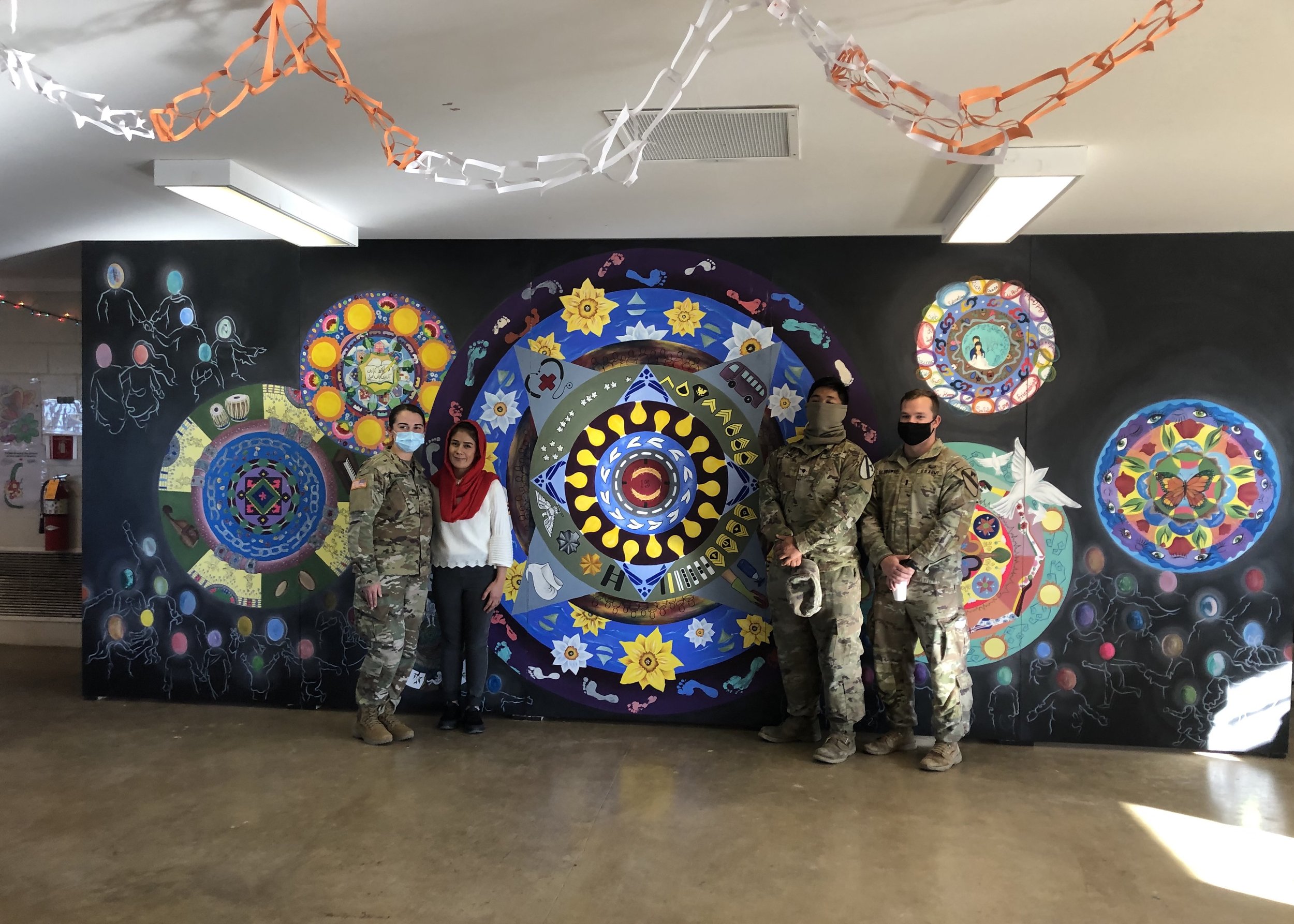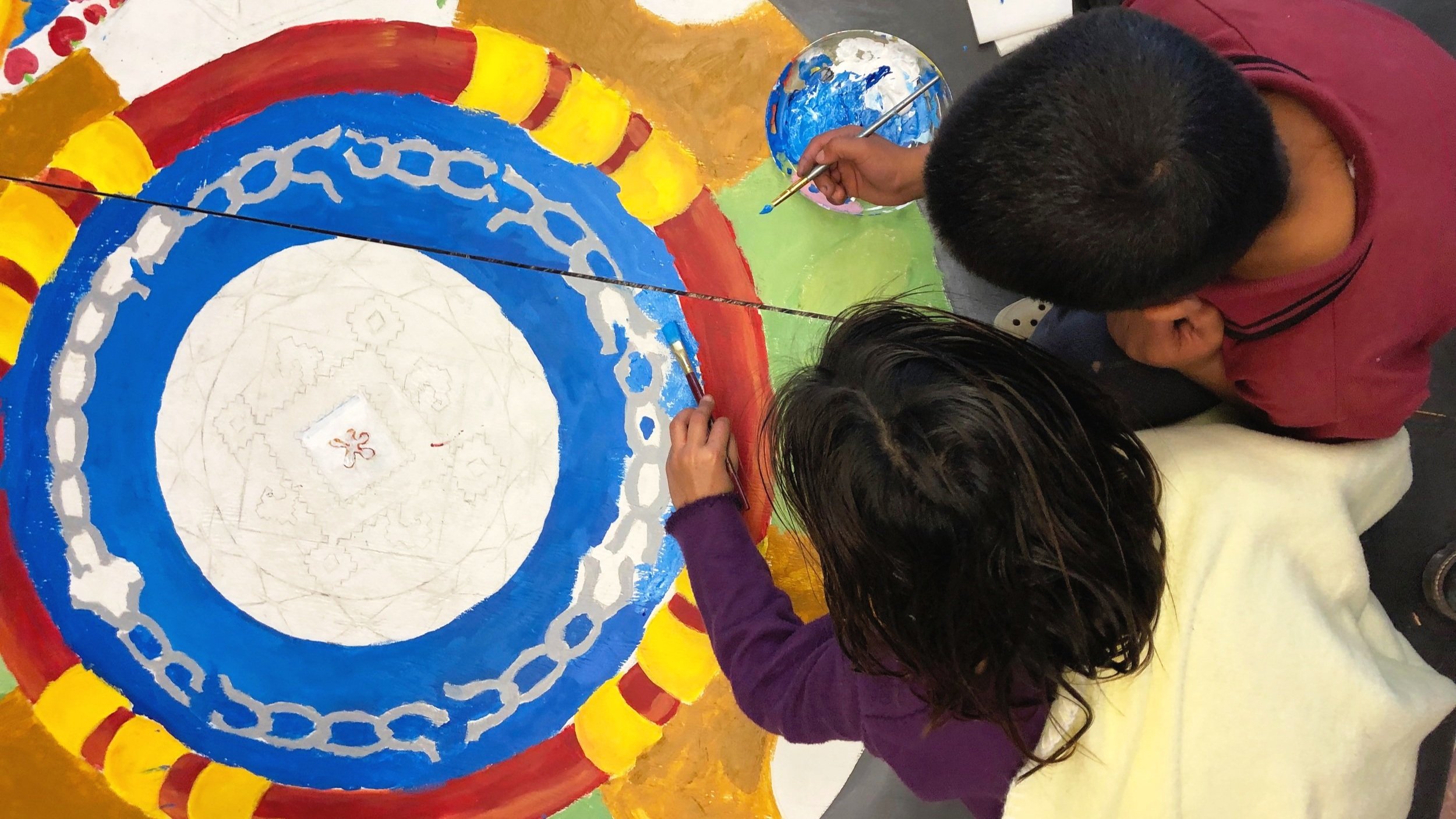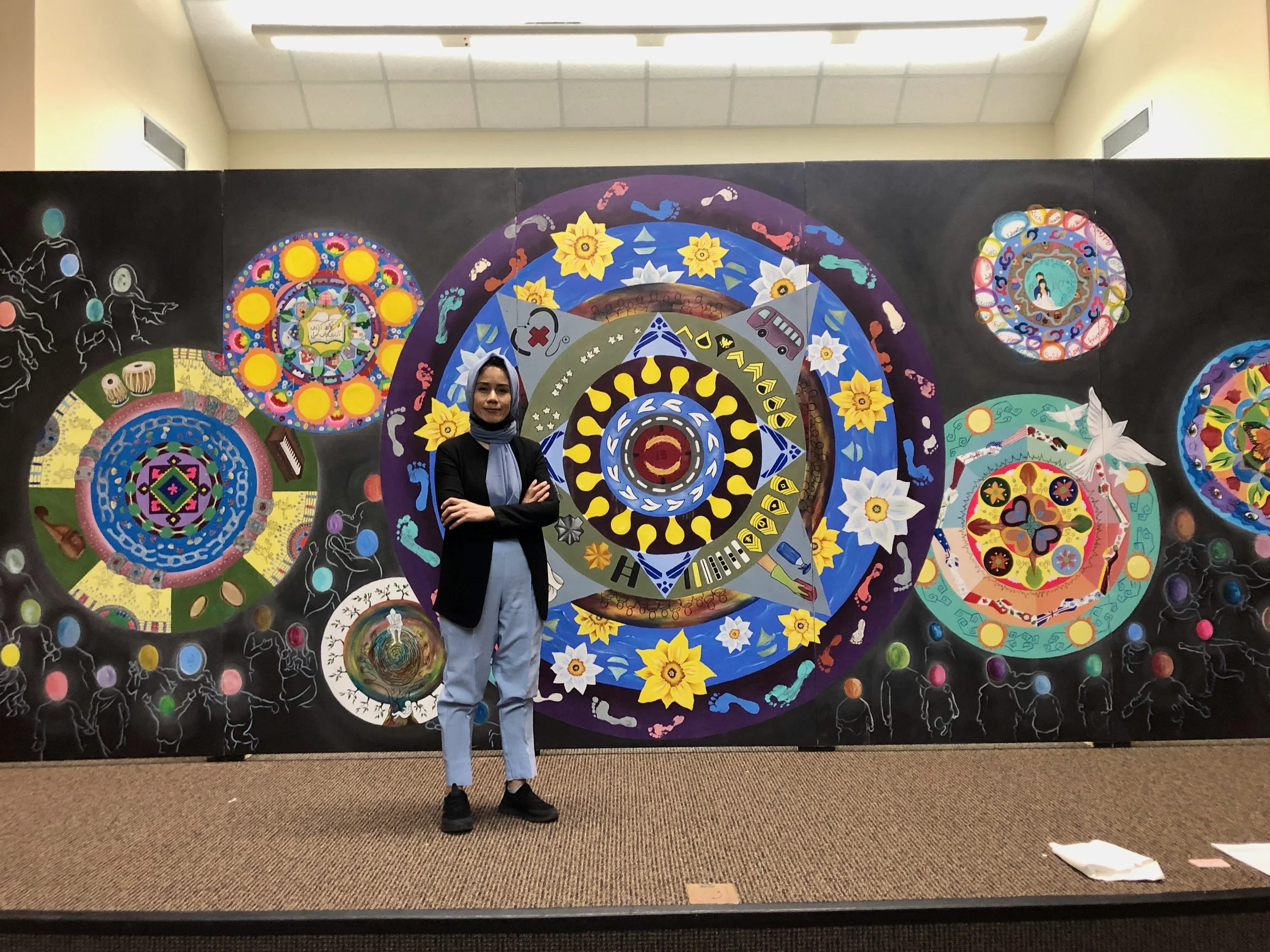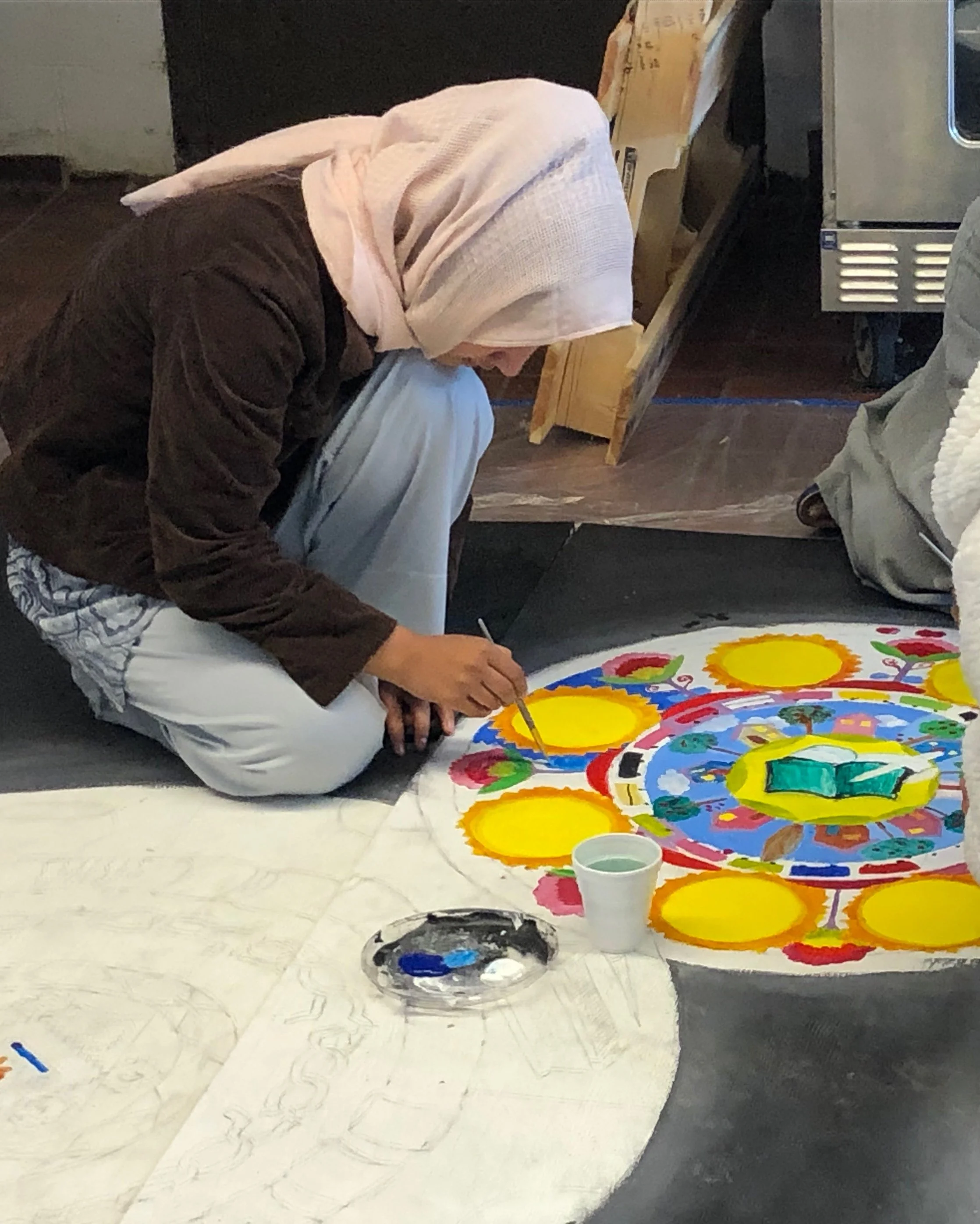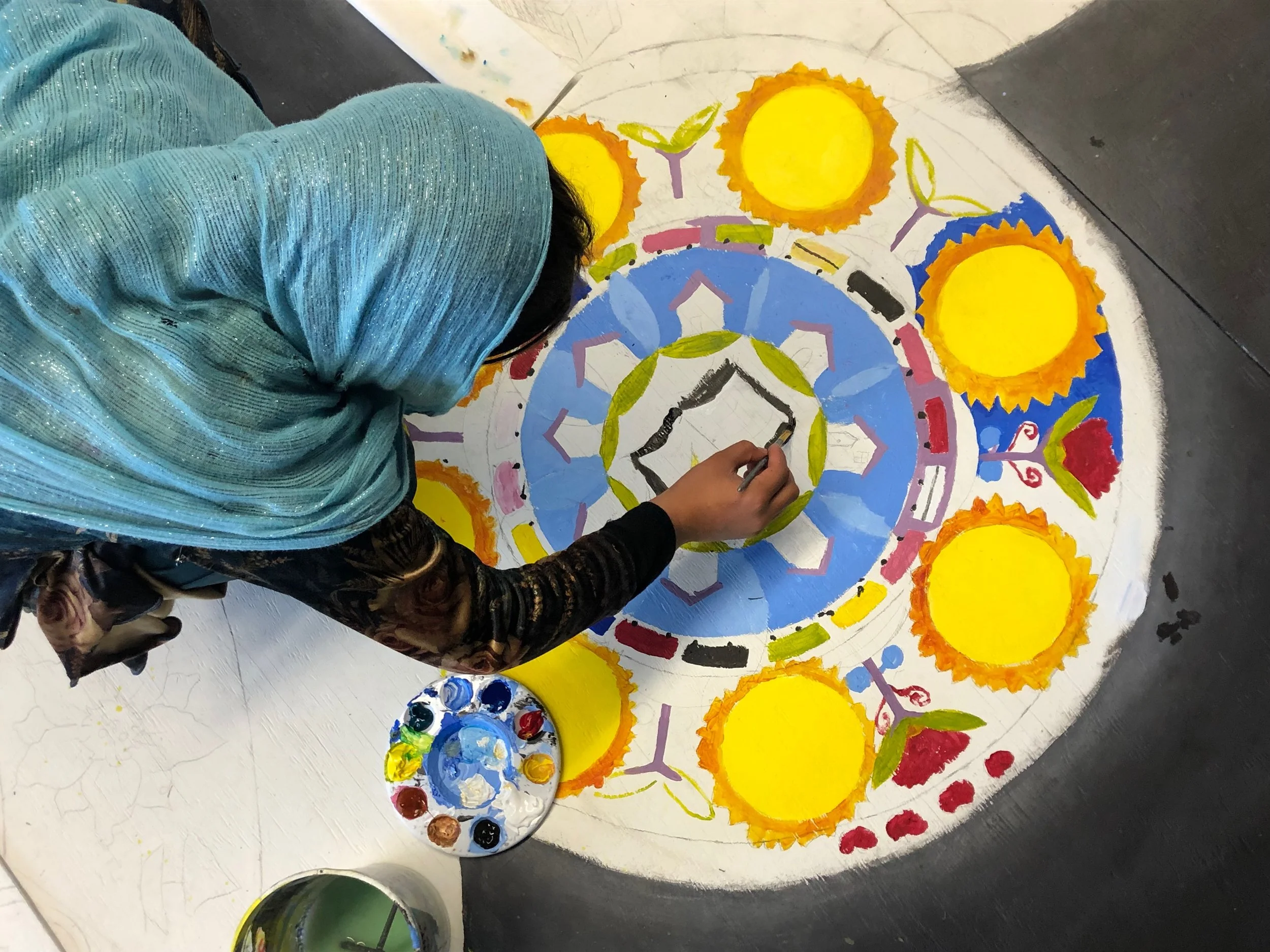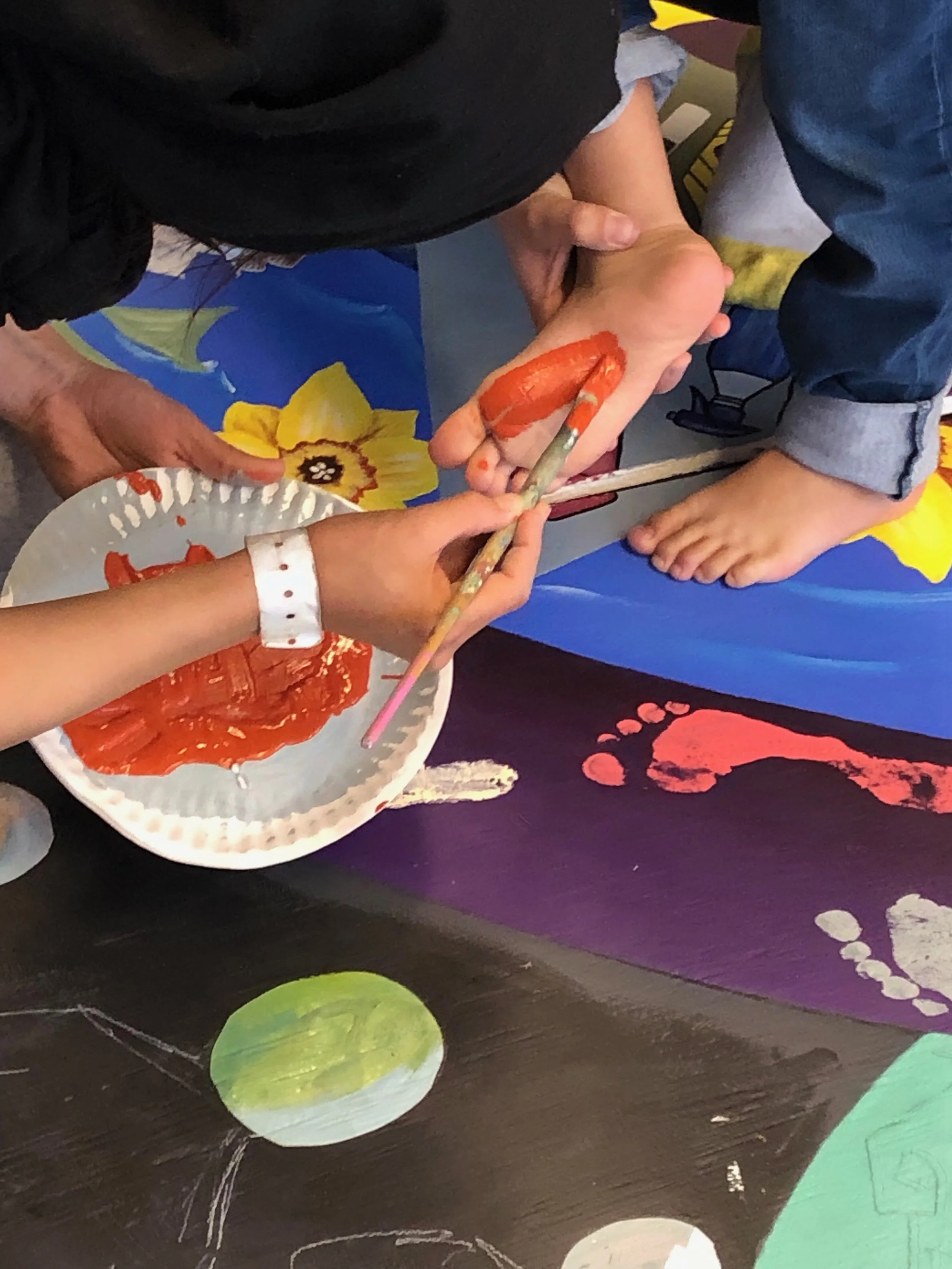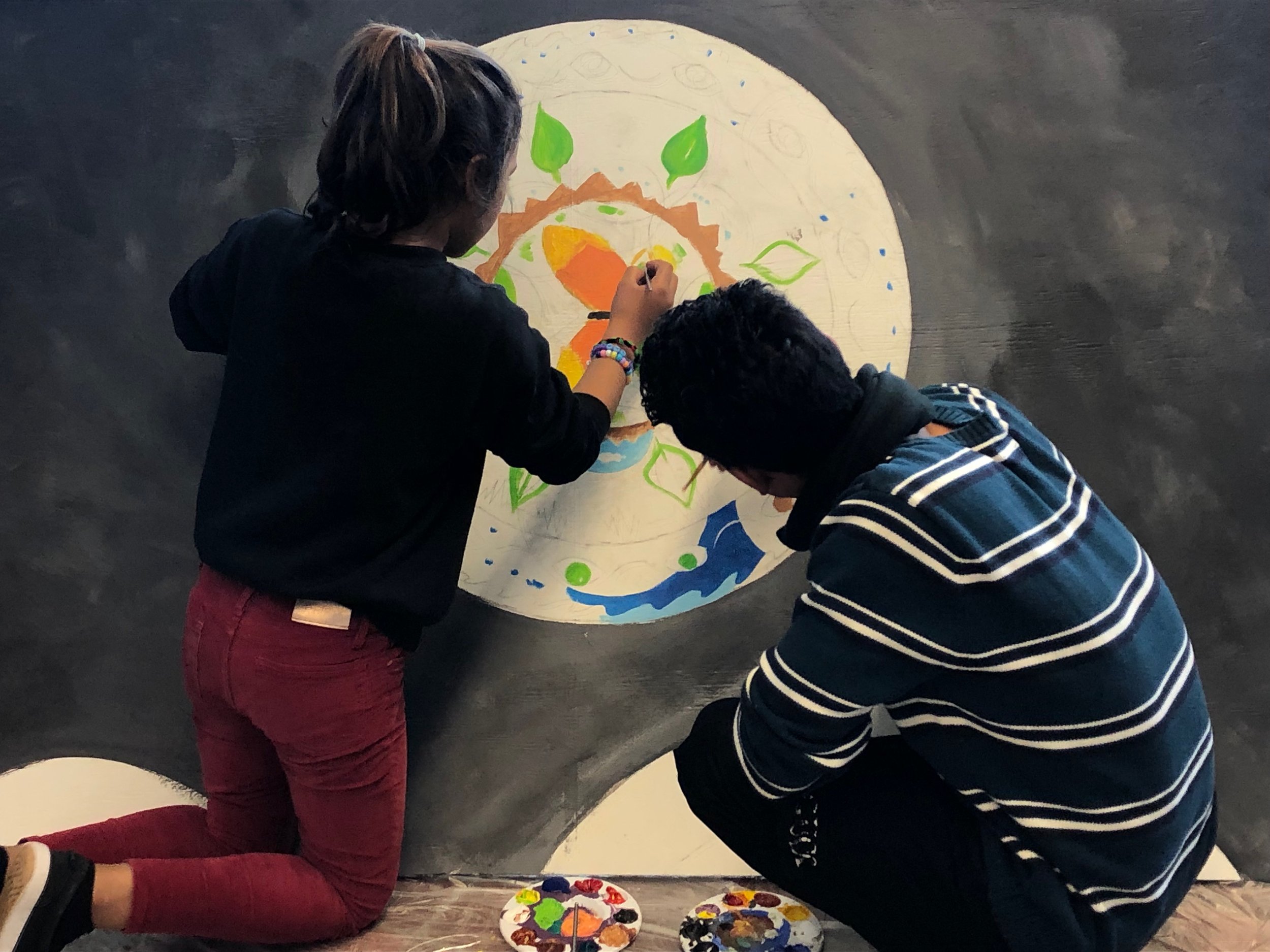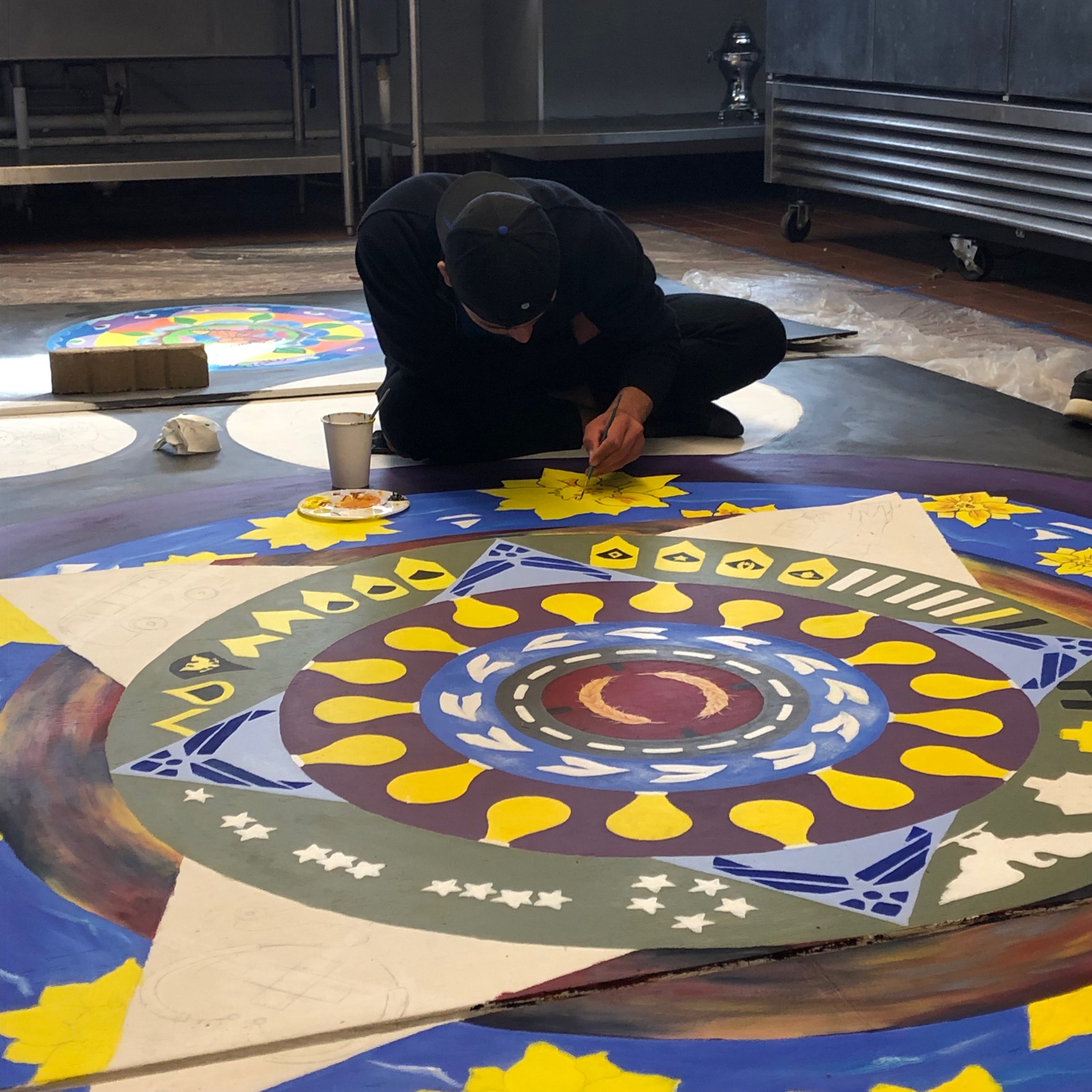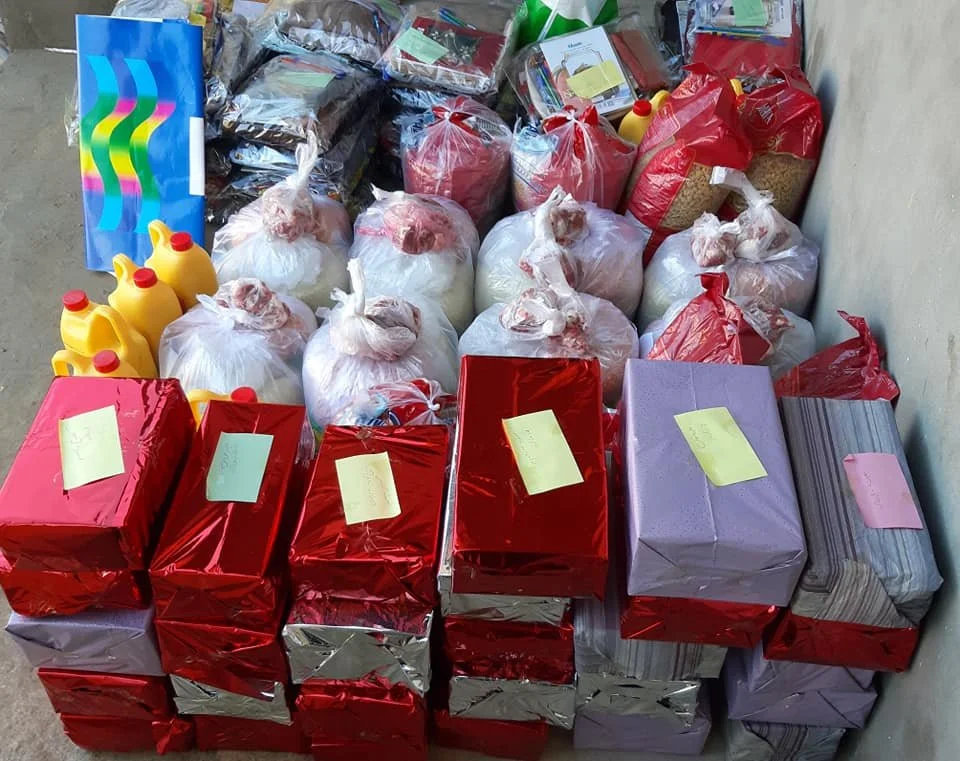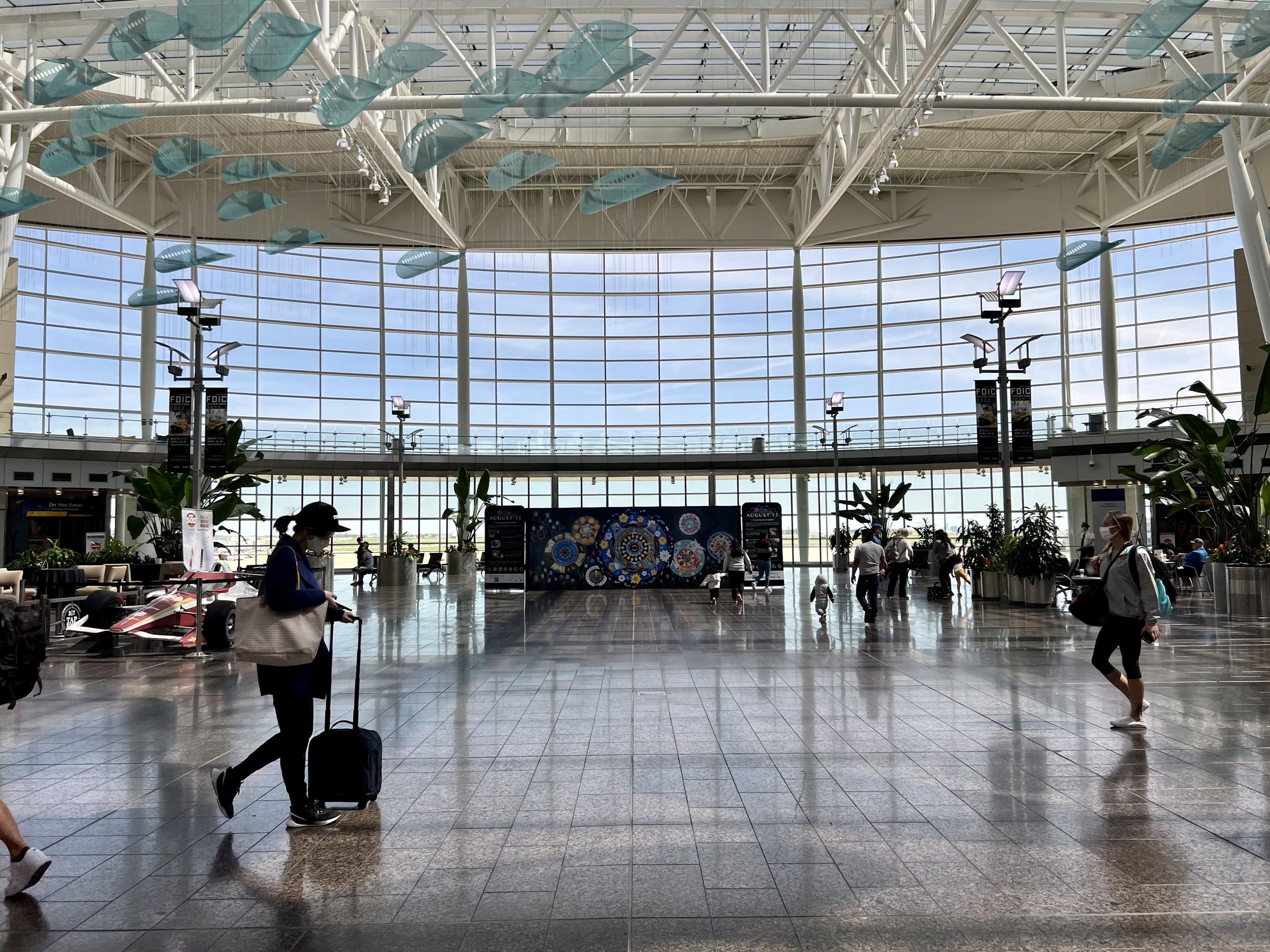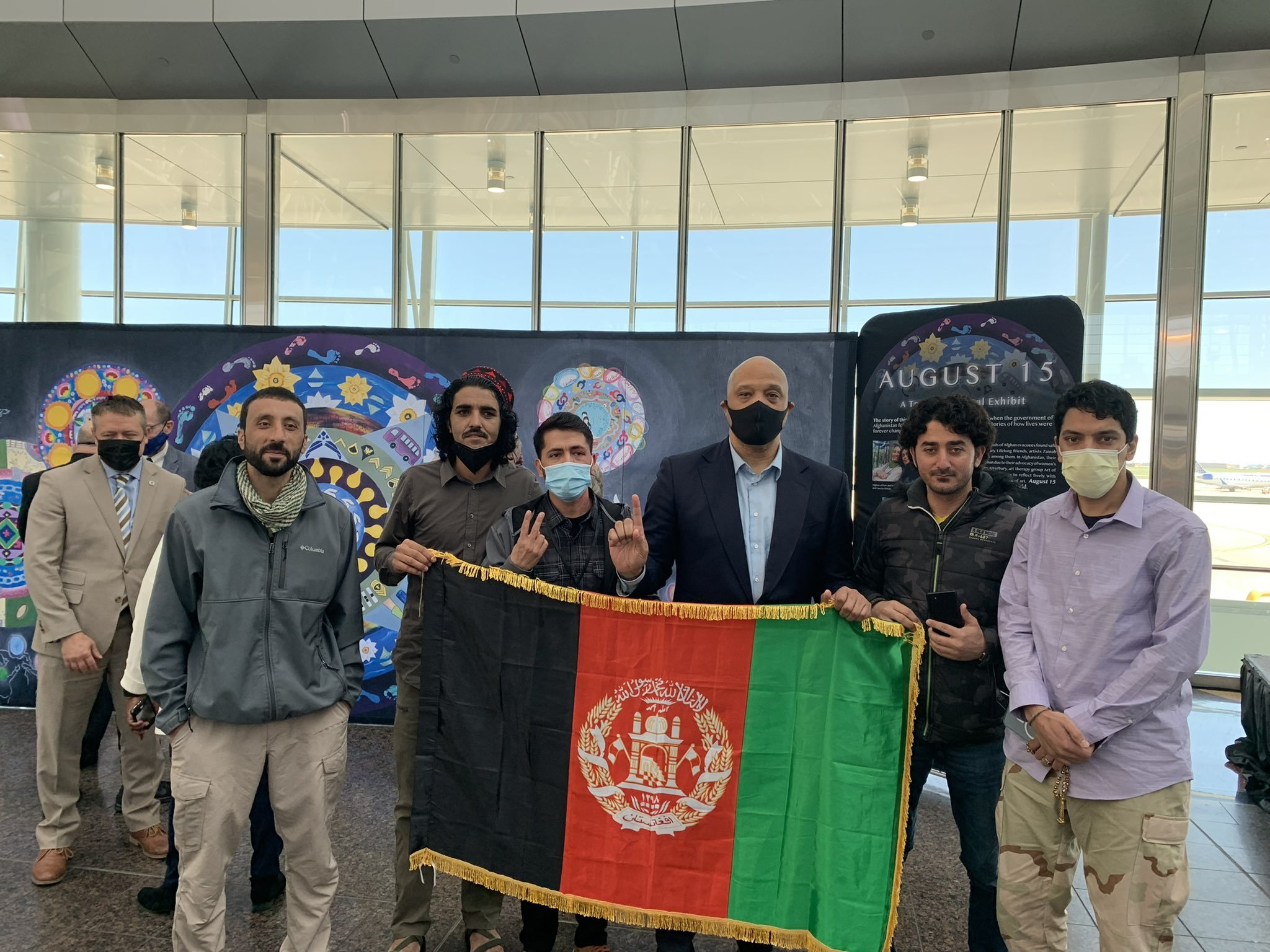August 15 Traveling Mural Exhibition
Purchase a Print of the Mural
Project Type
Traveling exhibition of mural created by Afghan evacuees
Year completed
2021
Dimensions
8’ x 20’
Created at
Camp Atterbury military base, IN
project sponsors
USCCB, Indianapolis Airport Authority
press
IND Airport, Indy Star, WRTV, Daily Journal, WTHI-10, WAVE & 14 News, WISH-TV News, Associated Press
host a display
Contact Tiffany Black to host an exhibition of the mural.
A Mural for Afghanistan
Purchase a Print of the Mural
The story of this artwork begins on August 15, 2021, when the government of Afghanistan fell to the Taliban. This mural tells many stories of how lives were forever changed that day.
After surviving this trauma, thousands of Afghan evacuees found safe haven at Indiana’s Camp Atterbury. Lifelong friends, artists Zainab Ahmadi and Fawzia Abdaly, were among them. In Afghanistan, their lives were threatened by the Taliban due to their advocacy of women’s empowerment. While at Camp Atterbury, art therapy group Art of the Soul created a safe space for evacuees to reflect freely. With muralist Tiffany Black, they created this work of art. August 15 represents their message to the world.
Those who stayed at Camp Atterbury have now found homes throughout North America. Based on the participation of 59 evacuees, this mural remains as a record of their collective experiences and hopes for the future. It also stands as a memorial for the brave people who sacrificed their lives in attempt to bring peace to this country. The exhibition of this mural will rally support for those left behind, suffering under constant threat of the Taliban.
Expressed in seven circles that each highlight thoughts, emotions, hopes, and dreams, this work grows from the August 15 date in the center to express the tremendous impact that it represents. Just as Afghan lives unfolded on that day, the mural’s theme extends outward from this starting point.
Prints of the mural may be purchased here.
Thank you to our sponsors! This project was supported by USCCB (United Conference of Catholic Bishops), and the traveling exhibition is sponsored by the Indianapolis Airport Authority:
This mural is on a traveling exhibition.
The beauty of Afghanistan has been eclipsed by war and misery. Now, as refugees begin their new lives, they hope to share their beautiful culture with their new neighbors. This mural will do the same for all who will view it.
Traveling exhibit generously funded by the Indianapolis Airport Authority.
Contact Tiffany Black to host a display in your city.
How you can help:
As one of the mural’s creators, Zainab Ahmadi observed, “When someone begins a new life in a new culture, their identity is washed away and they must start over.” By sharing this artwork and its stories, viewers will be inspired to welcome these courageous refugees as new members of their communities. In the spirit of Operation Allies Welcome, our country’s original resettlement effort, here are 4 ways you can help:
1.) Purchase a Print of the Mural
Nearly every Afghan who evacuated left family members and loved ones behind. Many in Afghanistan continue to suffer from violence and starvation. This August 15 traveling exhibit will raise funds for Open Hands for Children, delivering food and other necessities directly to Afghan children in need. Prints of the August 15 mural may be purchased to assist in this effort.
Help share the stories of this artwork and raise awareness for those who face persecution. Contact Tiffany Black to host a display in your city.
3.) Urge Biden to Protect Afghans Allies Left Behind
Join us and send a message to President Biden today. Urge the Administration to provide urgent humanitarian protections, including re-opening consular services, creating a pathway forward for Afghan allies currently in third countries, and establishing protections for the vulnerable women and children still in Afghanistan. Click here to visit Evacuate Our Allies coalition.
4.) Tell Congress to Pass the Afghan Adjustment Act Now
Call your Senators. Call your Congressional Representative. Tell them that Congress should immediately pass an Afghan Adjustment Act that would allow Afghan evacuees parolees an opportunity to seek lawful permanent resident status. Click here for a fact sheet on this Act.
Suggested message: “I urge you to pass an Afghan Adjustment Act, legislation that would allow Afghans arriving with humanitarian parole who were evacuated from Afghanistan to have a pathway to permanent status. Creating a pathway to apply to become lawful permanent residents after one year in the U.S. strengthens our communities and supports arrivals’ integration in their new homes.”

